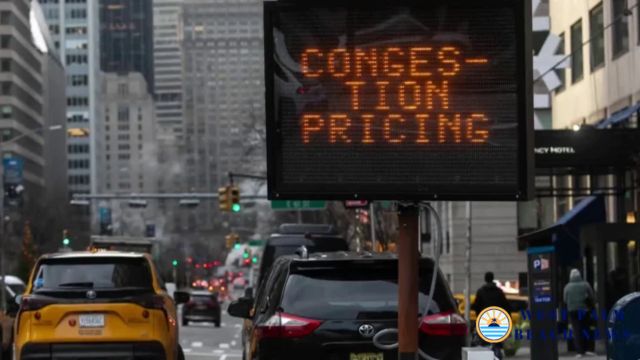WPBN: As a result of the formal opening of New York City’s first-in-the-nation Congestion Relief Zone on Sunday, motorists who enter Manhattan’s busiest areas will now be required to pay congestion charges of up to $9.
An announcement made by the Metropolitan Transportation Authority of New York stated that the zone “is fully operational” and that it opened at twelve minutes past midnight on Sunday morning.
In addition to raising funds for public transit, the plan intends to alleviate the notorious traffic difficulties that New York City is known for.
According to the pricing plan, the majority of vehicles that enter Manhattan’s central business area, which extends from 60th Street all the way down to the southern edge of the Financial area, are required to pay a peak tax of $9 between the hours of 5 a.m. and 9 p.m. during the weekdays and 9 a.m. and 9 p.m. on the weekends.
The off-peak rate would mean a discount of 75%, or $2.25.
Larger trucks and tourist buses will be required to pay a tax of $21.60 to enter Manhattan during peak hours, while smaller trucks and buses that are not used for commuting will be required to pay $14.40.
In addition to drivers with low incomes and those who have medical conditions that prevent them from utilizing public transportation, motorists will only be charged once per day, and certain transportation vehicles, such as those used by the government and emergency services, will be exempt from the price. Aside from that, school buses and commuter buses are excluded.

After the implementation of the toll, the Metropolitan Transportation Authority (MTA) forecasted that there would be a 10% decrease in the number of automobiles and trucks on the road.
MTA management have also pledged that the billions of dollars that would be earned through congestion pricing will be used to pay for the modernization of the system throughout the entire region.
After two years of delays and adjustments, the program was brought back into operation as a result of Governor Kathy Hochul’s efforts to bring it back to life. This was in response to concerns from commuters and businesses who believe the fare is not fair.
$51 Million Available for Homeowners in This State: Here’s the Simple Criteria
Additionally, the charges started as planned, despite the fact that New Jersey made a last-ditch effort to stop the proposal on environmental grounds with their opposition.
The complaint filed in New Jersey, which is seeking tens of millions of dollars, projected that there would be damage to the ecosystem if the traffic on the other side of the river became more severe.
Although the judge ordered that the Federal Highway Administration will be required to provide input, the Metropolitan Transportation Authority (MTA) announced last week that it had been given permission to move forward with the implementation of congestion pricing.
12-Year Sentence for Connecticut Man ‘Compton’ in North Carolina Firearms Trafficking Case
In response to the lawsuit filed by New Jersey, Hochul was quoted as saying that she offered money to resolve the case; however, no agreement was reached.
A earlier statement made by Hochul stated, “We have made multiple offers to settle this lawsuit, and they are very generous offers.”
It is possible that New York City is the first city in the United States to use congestion pricing; nevertheless, cities such as London and Stockholm have been using comparable pricing structures for quite some time.
Reference

















































